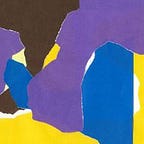The three-layer cycle and the tripartite separation of powers seem similar and easily confused; however, they are entirely different structures. We will explain it below in terms of comparison with the separation of powers.
Each layer is not a homogeneous monolith but has an internal structure. For example, each layer of the three-layer cycle (the people, the government, and the world), which is the focus of this paper, can be divided into two axes.
- The people: the general public and certain vested interest groups
- The government: reformist bureaucrats and conservative bureaucrats
- The world: aspects of the natural environment and aspects of international relations
We can find another internal structure for each layer.
The tripartite separation of powers can be interpreted as another example of such internal structures in one layer of “government” within our expression.
For example, as the following figure show, when we unfold the “government” part of the three-layer cycle, we can find three internal structures: legislature, executive, and judiciary. In this case, the three parties are formally supposed to be independent and divide their power within the government.
We have brought up the “ tripartite separation of powers” in this article because it is often referred to as a typical example of the division of power and is easily confused with the three-layer cycle we are discussing.
The three-layer cycle and the tripartite separation of powers both deal with three entities of power. The former describes “the structural division of power from different levels, such as the controller and the controlled, or the meta-level and the object-level. The latter is “the structure within a specific layer of government.”
Credits: Original idea by Asaki NISHIKAWA, Draft written by Toshihiro FURUYA, Drawing by Yoshimi KIKUYA, Simultaneous editing by VECTION
